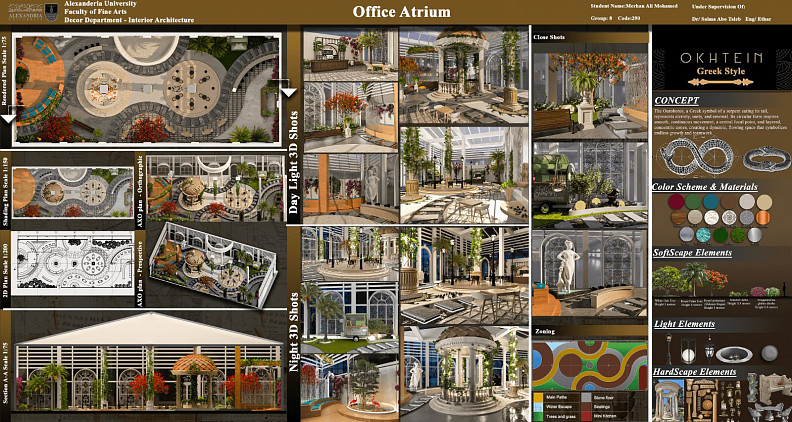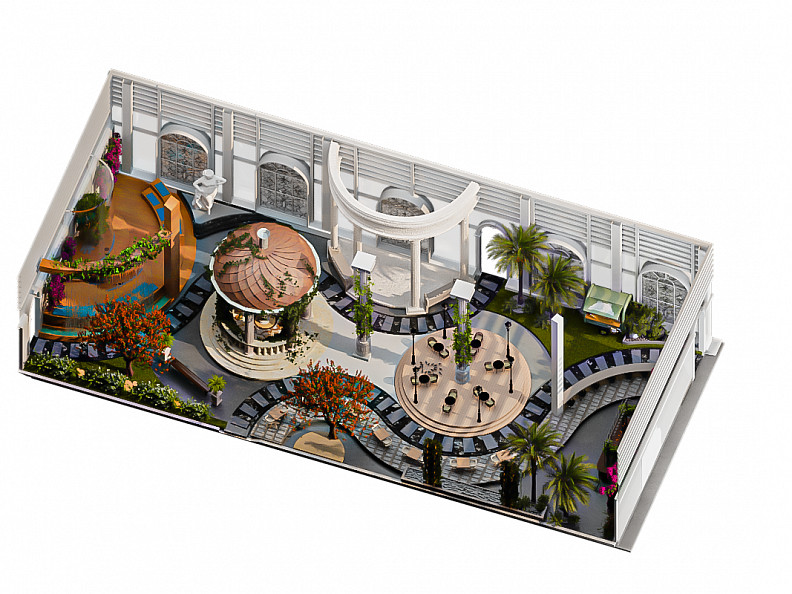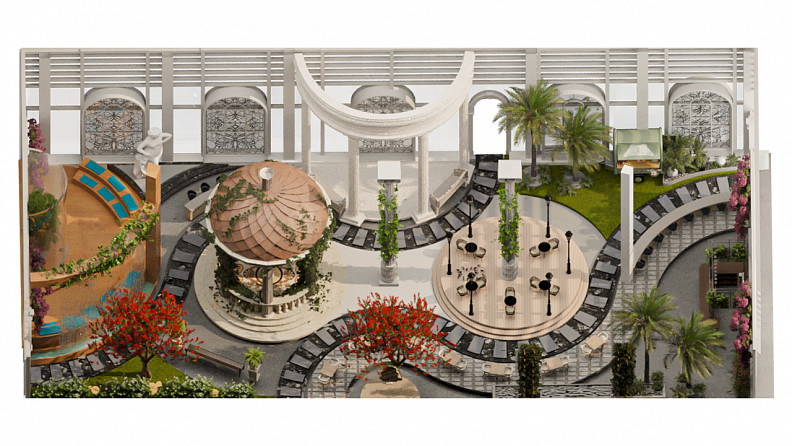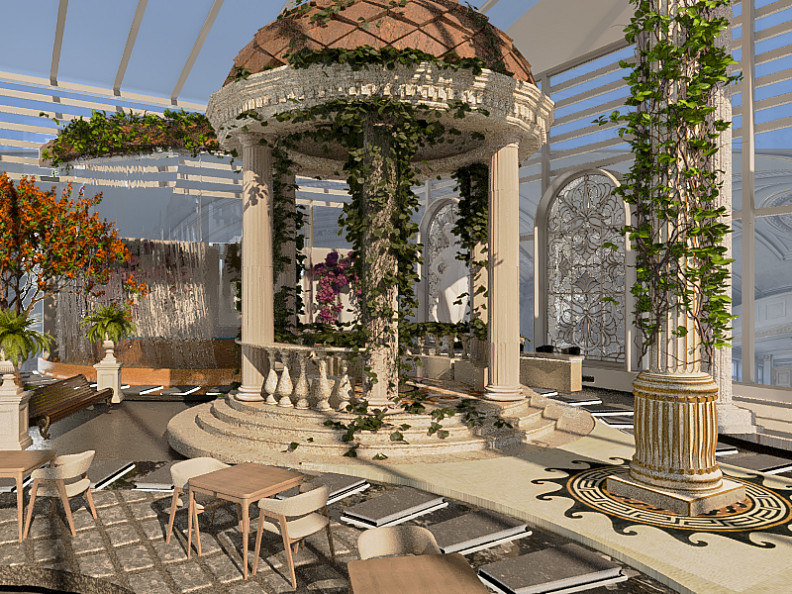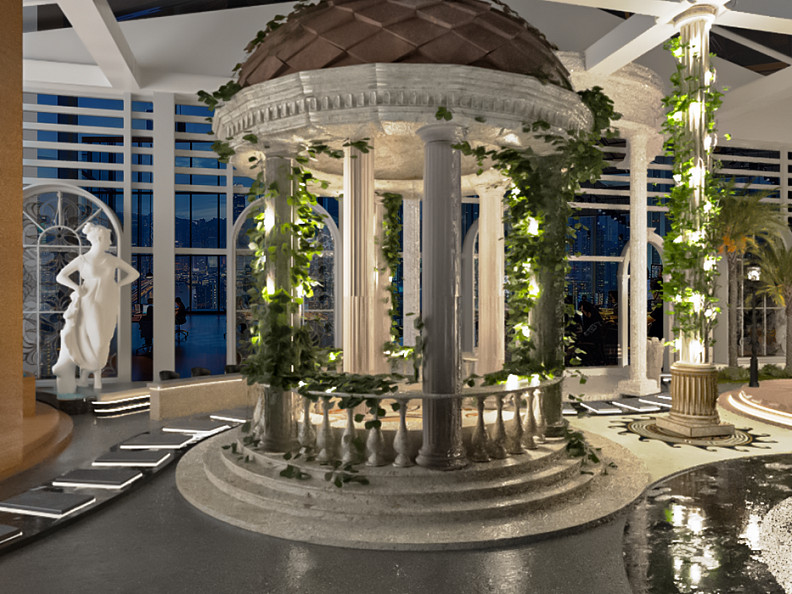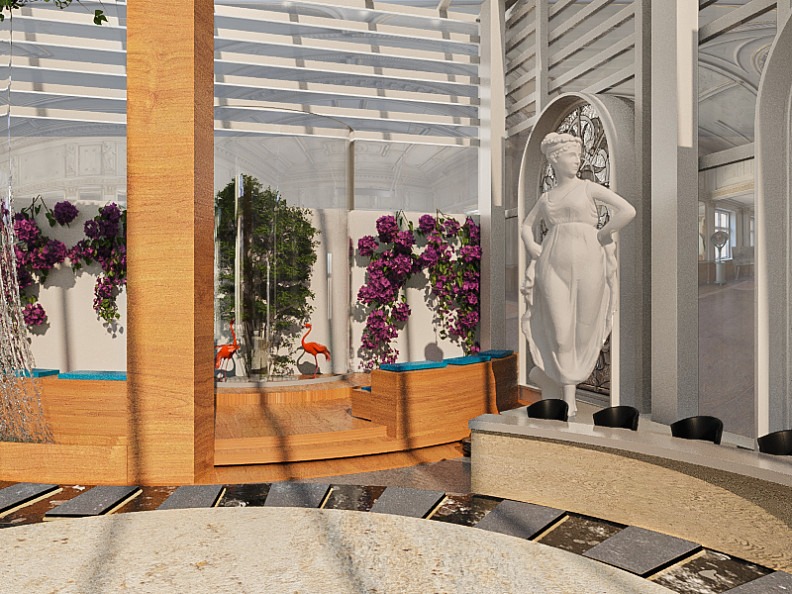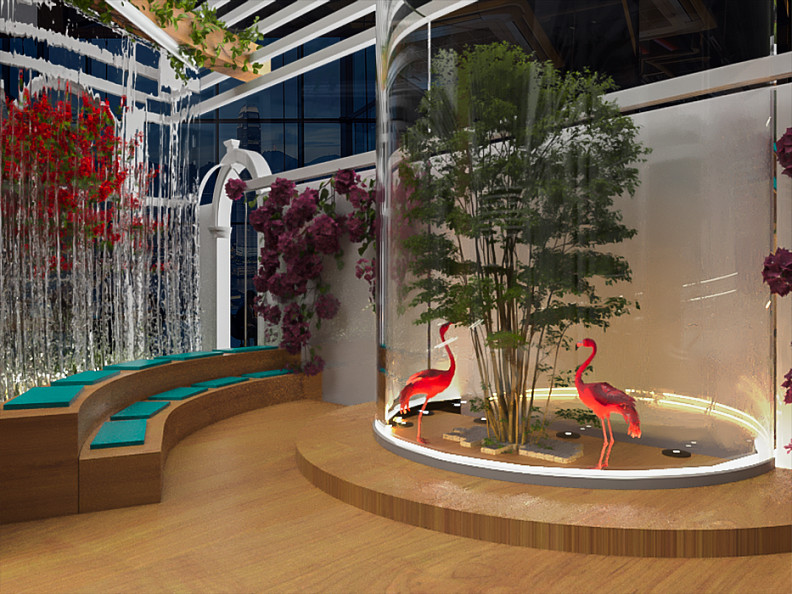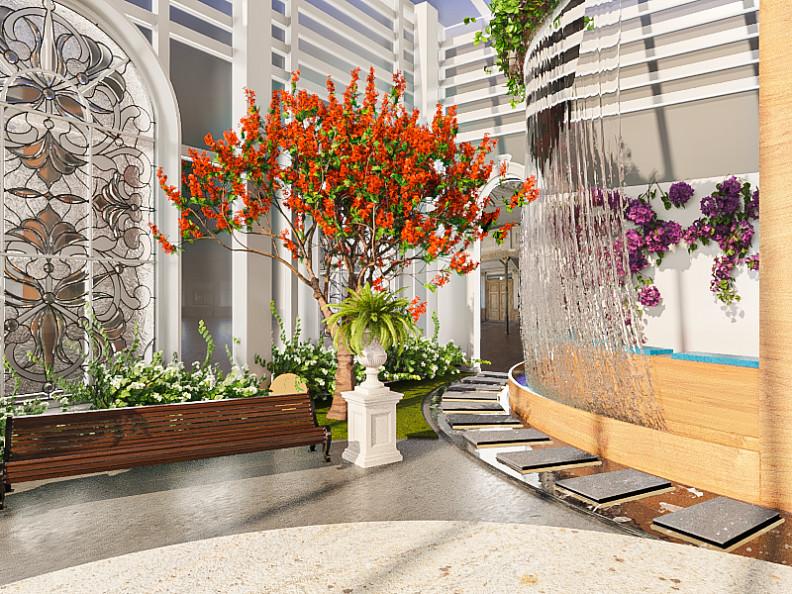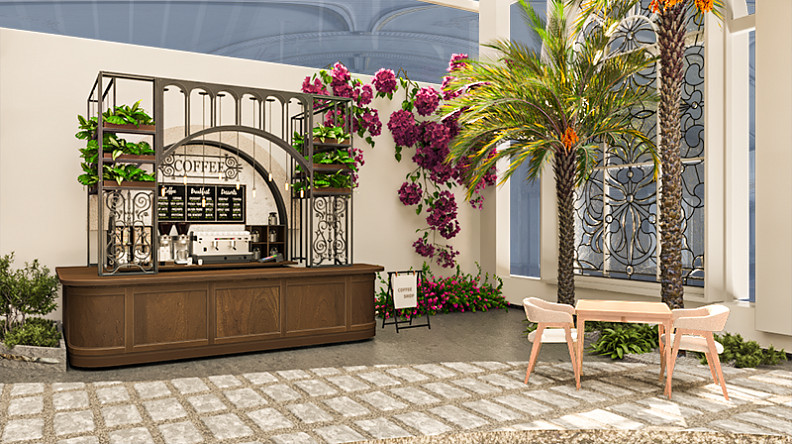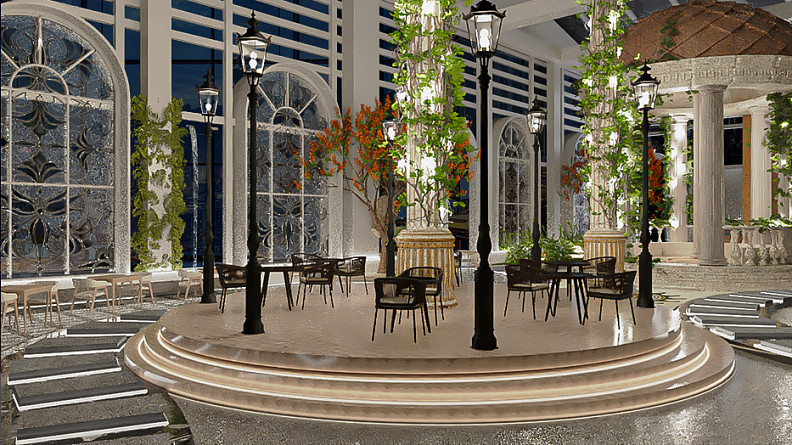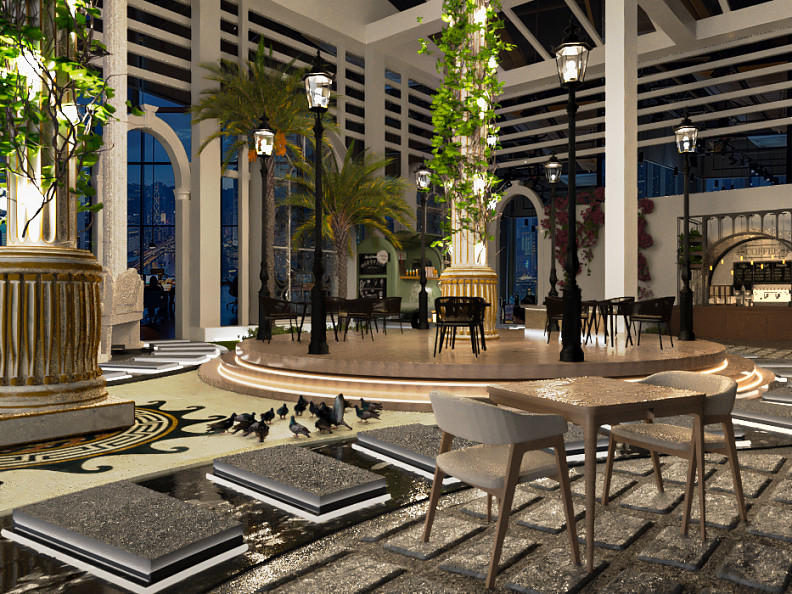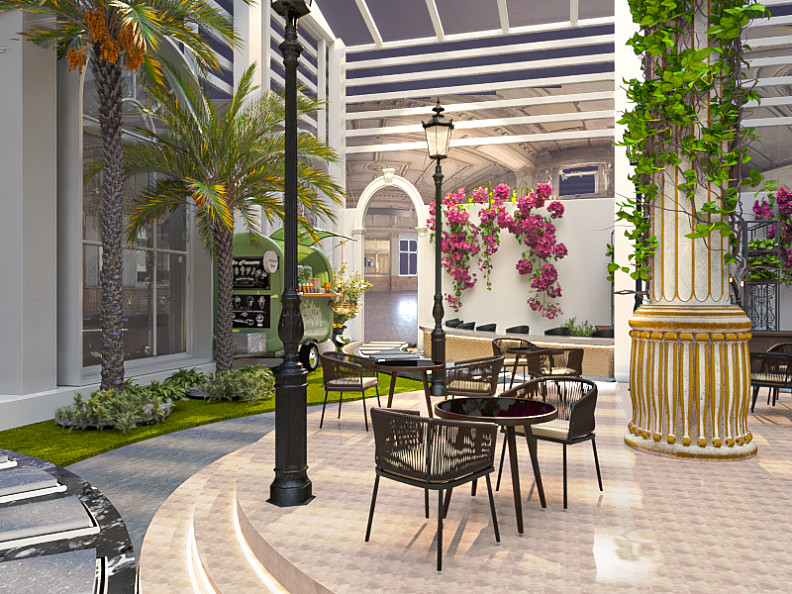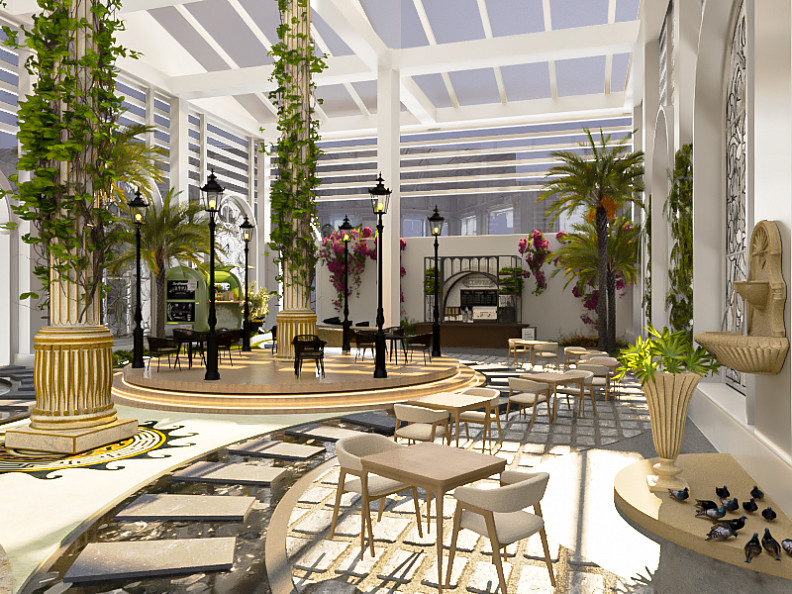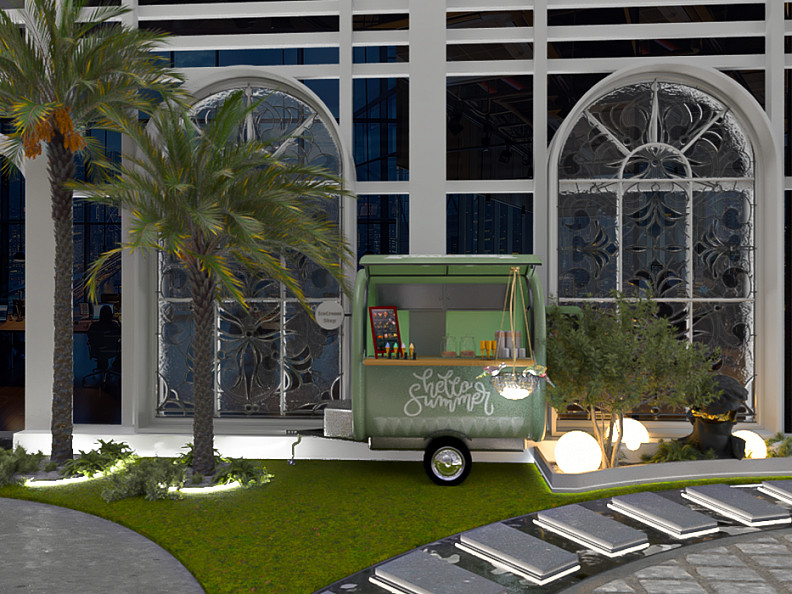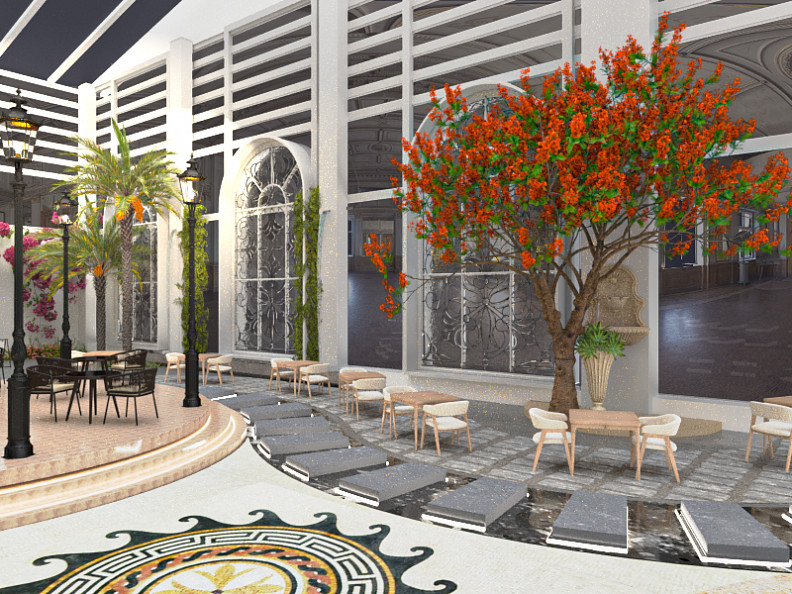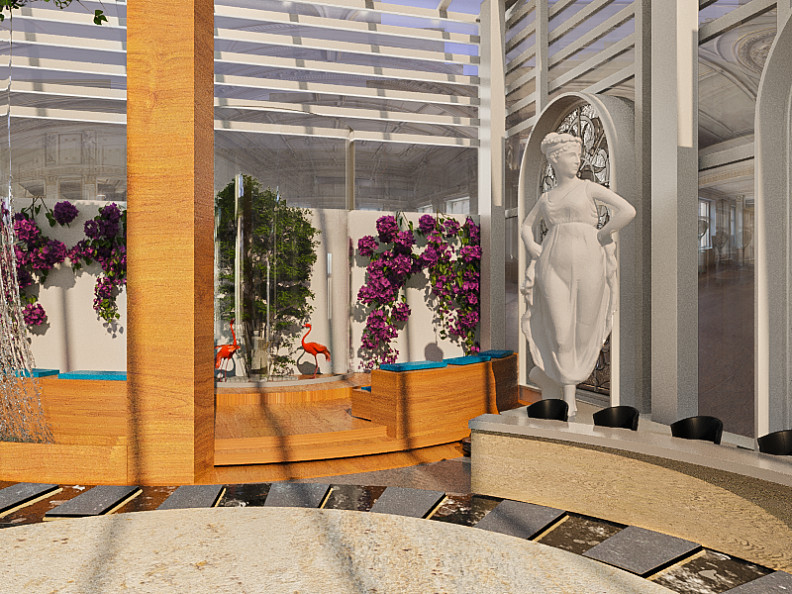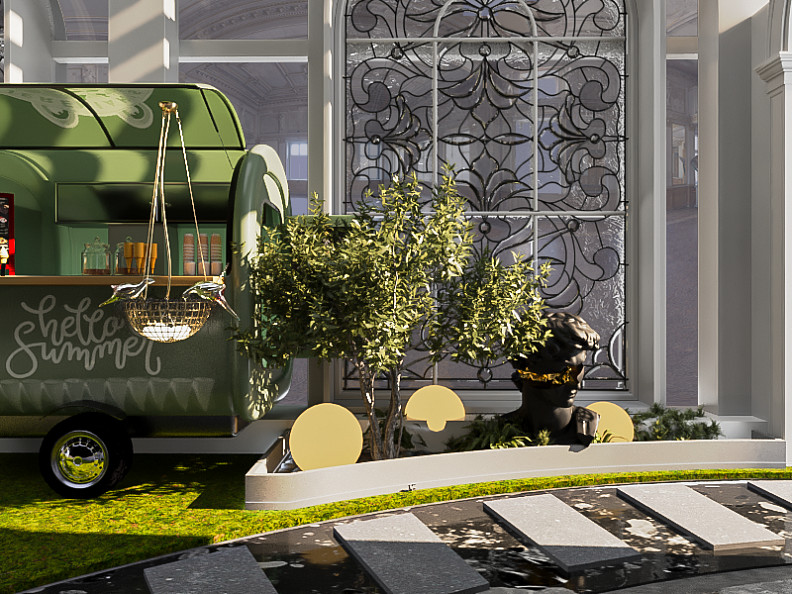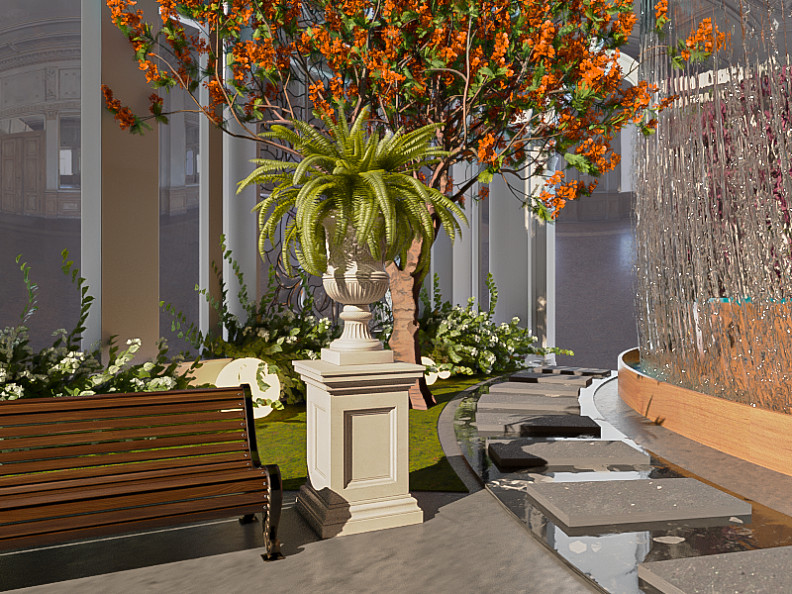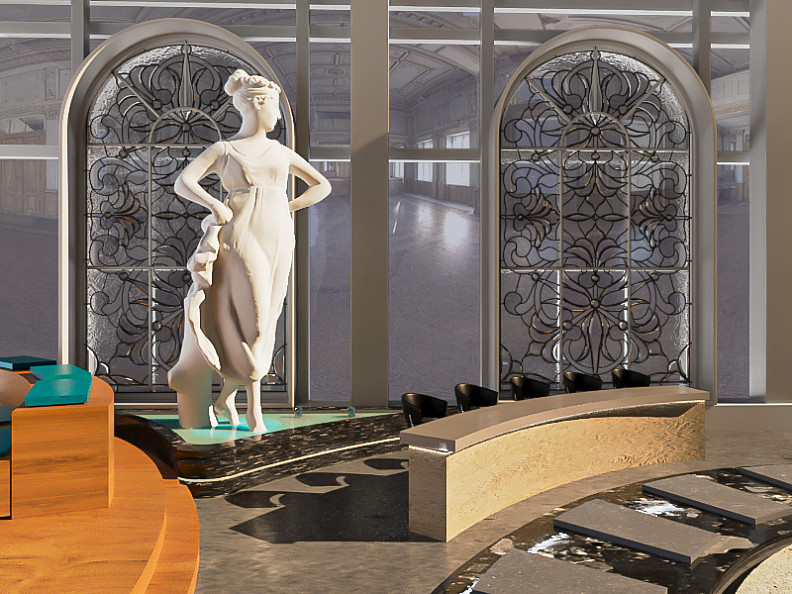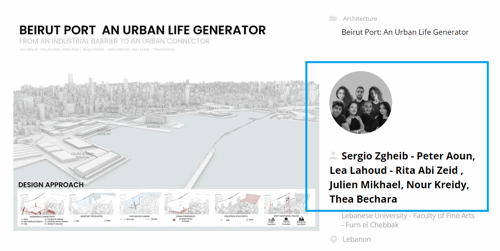Atrium of Classical Renewal: An SDG-Driven Greek-Inspired Interior

Project idea
The Greek Atrium project reimagines the classical atrium concept through a sustainable and contemporary lens, merging ancient architectural harmony with modern environmental responsibility. The design aims to create a multifunctional interior courtyard that promotes natural ventilation, daylight penetration, and social interaction while reducing energy dependency.
Rooted in Greek-Roman architectural order, the project revitalizes timeless design principles—symmetry, proportion, and material honesty—through modern construction systems and eco-efficient solutions. The atrium serves as a biophilic core, integrating vegetation, reflective surfaces, and water features to improve microclimate conditions and indoor air quality.
Aligned with the United Nations Sustainable Development Goals (SDGs), the project directly contributes to:
- SDG 11 (Sustainable Cities and Communities) by providing inclusive, human-centered interior spaces that foster community well-being.
- SDG 12 (Responsible Consumption and Production) through the use of recyclable, locally sourced materials, and low-impact finishes.
- SDG 13 (Climate Action) by employing passive cooling and daylighting strategies to minimize energy consumption.
The primary goal is to redefine interior architecture as a bridge between cultural heritage and sustainable innovation, creating a spatial experience that celebrates light, balance, and environmental harmony.
Project description
The Greek Atrium project explores the intersection of heritage and sustainability through a comprehensive interior architectural design that redefines the atrium as a central environmental and social hub. The project scope includes spatial planning, structural integration, material specification, lighting design, and environmental systems coordination.
The atrium is conceived as the heart of the interior environment, functioning as a passive cooling and lighting core. Natural light is filtered through clerestory openings and diffused by reflective stone surfaces, minimizing artificial lighting requirements during daytime. Vertical greenery and water features contribute to improved thermal comfort and air purification, reinforcing biophilic design principles.
Material selection prioritizes natural stone, lime plaster, and locally sourced beech pine wood, all treated with low-VOC finishes to ensure health-conscious and environmentally responsible construction. Recycled aluminum framing and high-performance glazing are implemented to enhance thermal efficiency and structural durability.
Artificial lighting follows a layered approach integrating concealed linear LED systems, perimeter coves, and accent spotlights embedded in the gypsum ceiling structure, highlighting the geometric rhythm of columns and cornices.
From conceptual design to material detailing, the project demonstrates how classical aesthetics can coexist with modern sustainability practices, translating the essence of Greek architectural identity into a timeless, resource-efficient, and human-centered spatial experience.
Technical information
The Greek Atrium project integrates traditional design logic with advanced sustainable technologies to achieve environmental efficiency and aesthetic durability.
1- Structural System:
- Reinforced concrete frame with concealed beams supporting a double-height atrium volume. The structure is optimized for natural ventilation and daylight integration through strategically placed clerestory openings and vertical voids.
2- Materials and Finishes:
- Flooring: Natural limestone slabs with non-slip finish for durability and heat reflectance.
- Walls: Lime-based plaster over thermal insulation panels, promoting humidity regulation and breathability.
- Ceiling: Multi-level gypsum board ceiling system incorporating LED coves, hidden light channels, and acoustic panels for sound absorption.
- Woodwork: Locally sourced beech pine treated with low-VOC water-based coating.
- Metal Elements: Recycled aluminum profiles with electrostatic matte finish for column bases, railing, and lighting frames.
- Glazing: Double-glazed low-emissivity glass with UV protection for energy conservation.
3- Lighting and Electrical Systems:
LED-based energy-efficient lighting system, controlled by dimmable sensors and daylight-responsive automation. Recessed magnetic tracks ensure flexible lighting arrangements for exhibitions and gatherings.
4- HVAC and Environmental Systems:
Passive ventilation shafts combined with a hybrid cooling system that reduces mechanical load by up to 30%. Smart thermostats and motion sensors regulate temperature and power use.
5- Sustainability Features:
- Passive daylight and ventilation strategy minimizing energy consumption.
- Use of recyclable and low-impact materials supporting SDG 12.
- Indoor planting and water features enhancing air quality and microclimate balance.
- Compliance with SDG 11 and SDG 13 through energy-efficient design and climate-responsive construction materials.
6- Execution Scope:
Covers complete interior detailing, lighting coordination, materials specification, environmental system integration, and visual presentation.
